Michigan Could Be on the Verge of Another Drinking Water Crisis
State officials say Michigan leads the nation in PFAS research, but water advocates say we’re far behind in regulating the toxic chemicals.
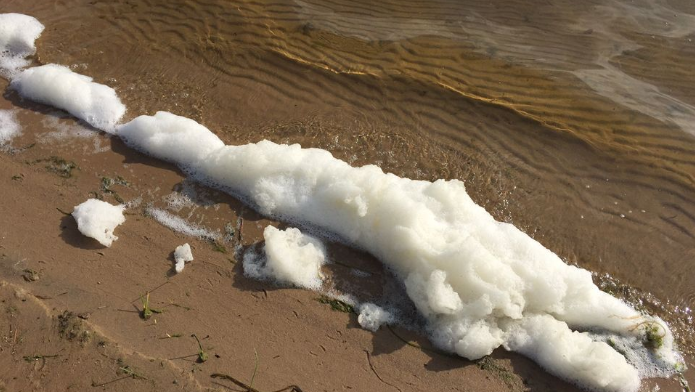
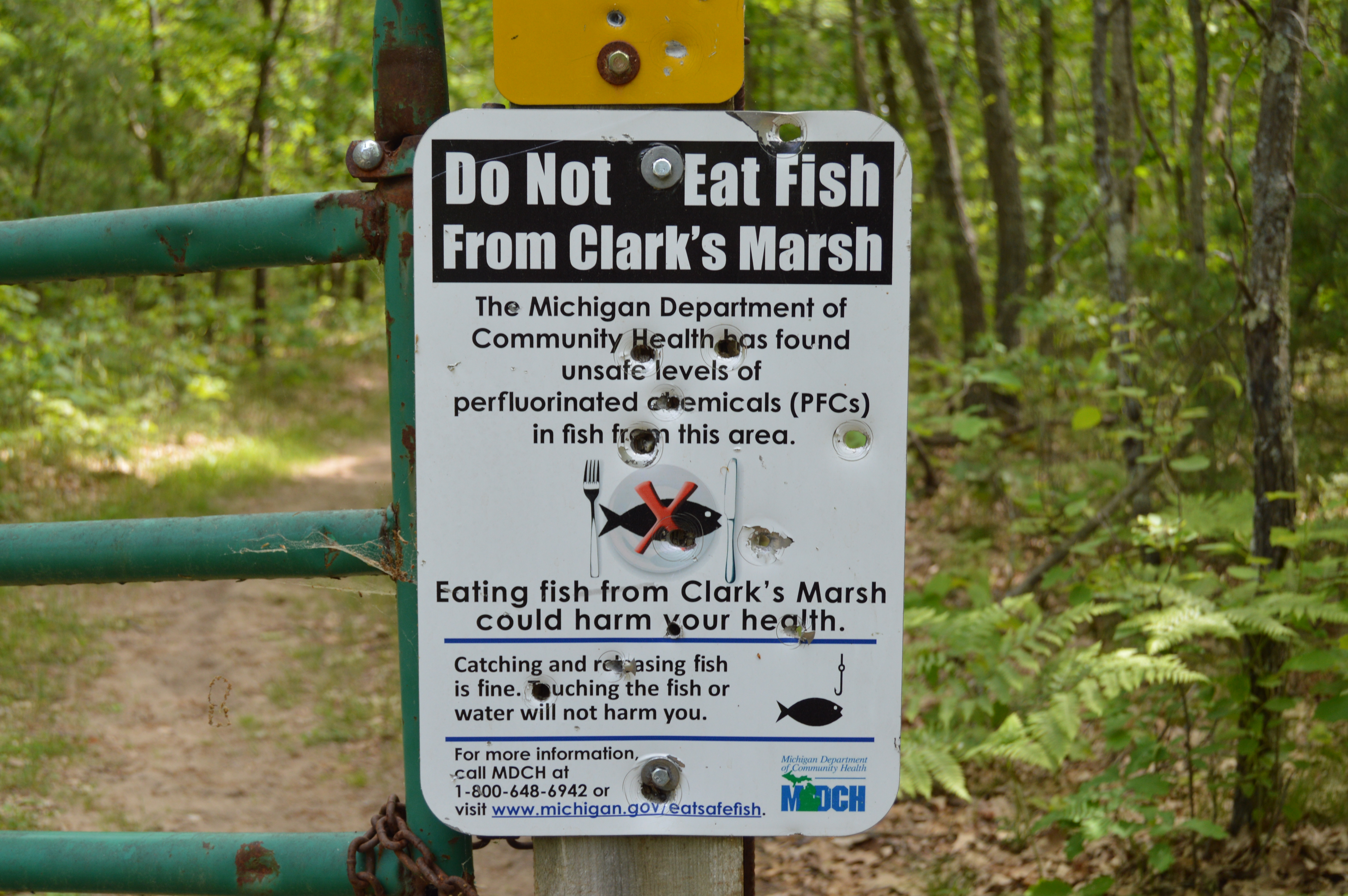
Last fall Anthony Spaniola discovered a white foam had washed up on the shore of his family’s cottage on Van Etten Lake in Oscoda.
“It’s unusual and it’s kind of sticky, and it piles up and it’s a little bit sudsy looking,” says Spaniola. “It’s something that would probably attract a child… but it’s not something you’d want your child playing in.”

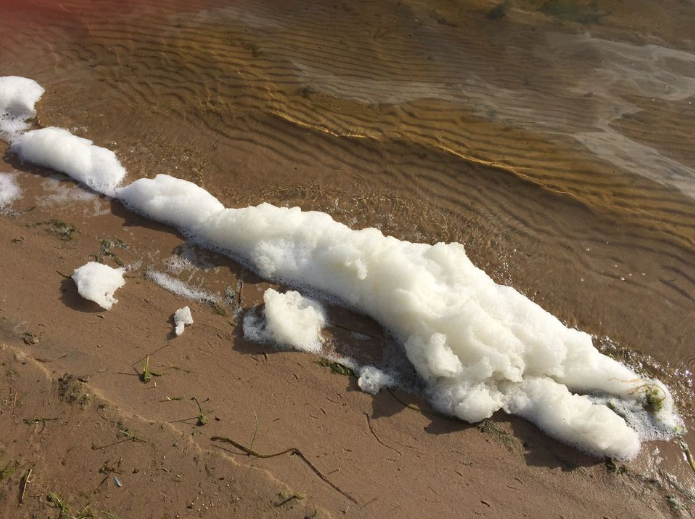
Spaniola knew exactly what that funny looking foam was.
“Maybe it wasn’t quite panic, but it was a feeling of dread,” he says.
The foam is a byproduct of fire-fighting spray that soaked into the ground at the decommissioned Wurtsmith Air Force base, just across Van Etten Lake from Spaniola’s place. The old Air Force base used fire-fighting foam for decades to train troops how to put out airplane and vehicle fires. That fire retardant contains chemicals known as polyflouroalkyl substances, or PFAS.
PFAS chemicals are in many common and household products – non-stick cookware, water-repellent clothing, stain-resistant fabric, and some paints and food packaging. PFAS were developed by 3M and DuPont decades ago, and made products more efficient.

“Humans are really good at coming up with new chemicals.”
That was the case with the Hush Puppies manufactured in Rockford, Michigan.
The leather shoes were waterproofed with Scotchgard, which contains PFAS that leached into the ground at the dumping sights of for manufacturer Wolverine Worldwide.
Wolverine, DuPont and 3M all knew the chemicals were harmful far before the public.**
Nick Schroeck with the Environmental Law Clinic at Wayne State University says it used to be common for manufacturers to dispose of chemicals with little thought of long-term ramifications.
“Back, pre-environmental law, think pre-1970s, you may have had chemicals that were just dumped out back behind the factory,” says Schroeck. “Now we know these PFAS chemicals are very persistent in the environment, meaning they don’t break down. They’re in the environment for a very, very long time… They would accumulate over time in the groundwater plume under the soil.”
PFAS toxins pose a threat to drinking water when they accumulate in the groundwater. Ingesting PFAS has been linked to serious health outcomes, including certain types of cancer, developmental issues in children, and damage to the liver and kidneys.
The Environmental Protection Agency set a lifetime advisory for PFAS in drinking water at a level of 70 parts per trillion (ppt). A lifetime advisory is an unenforceable suggestion of what level of PFAS contamination one could reasonably consume and avoid getting sick. In January of this year, the state of Michigan followed the EPA’s lead, and made 70 ppt the legal threshold for groundwater contamination.
A concentration of 70 ppt is equivalent to about 70 grains of sand in an Olympic sized swimming pool. That doesn’t sound like much, but studies find probable adverse health effects at levels of 50 ppt, and research continues on thresholds even lower than that. Low levels of PFAS are popping up in many sites throughout Michigan.
“What I’ve heard from Michigan Department of Environmental Quality is where they’re testing for PFAS, they’re finding it,” says Schroeck, “and in some places in very significant quantities.”
Sites that have tested positive for PFAS contamination include Ann Arbor, Mt. Clemens, Flint, Lansing, and several other communities.
“Humans are really good at coming up with new chemicals,” says Schroeck. “The issue is that often times the commercial development of these chemicals is often far ahead of the regulation.”
“It is going to be expensive to do this right.”
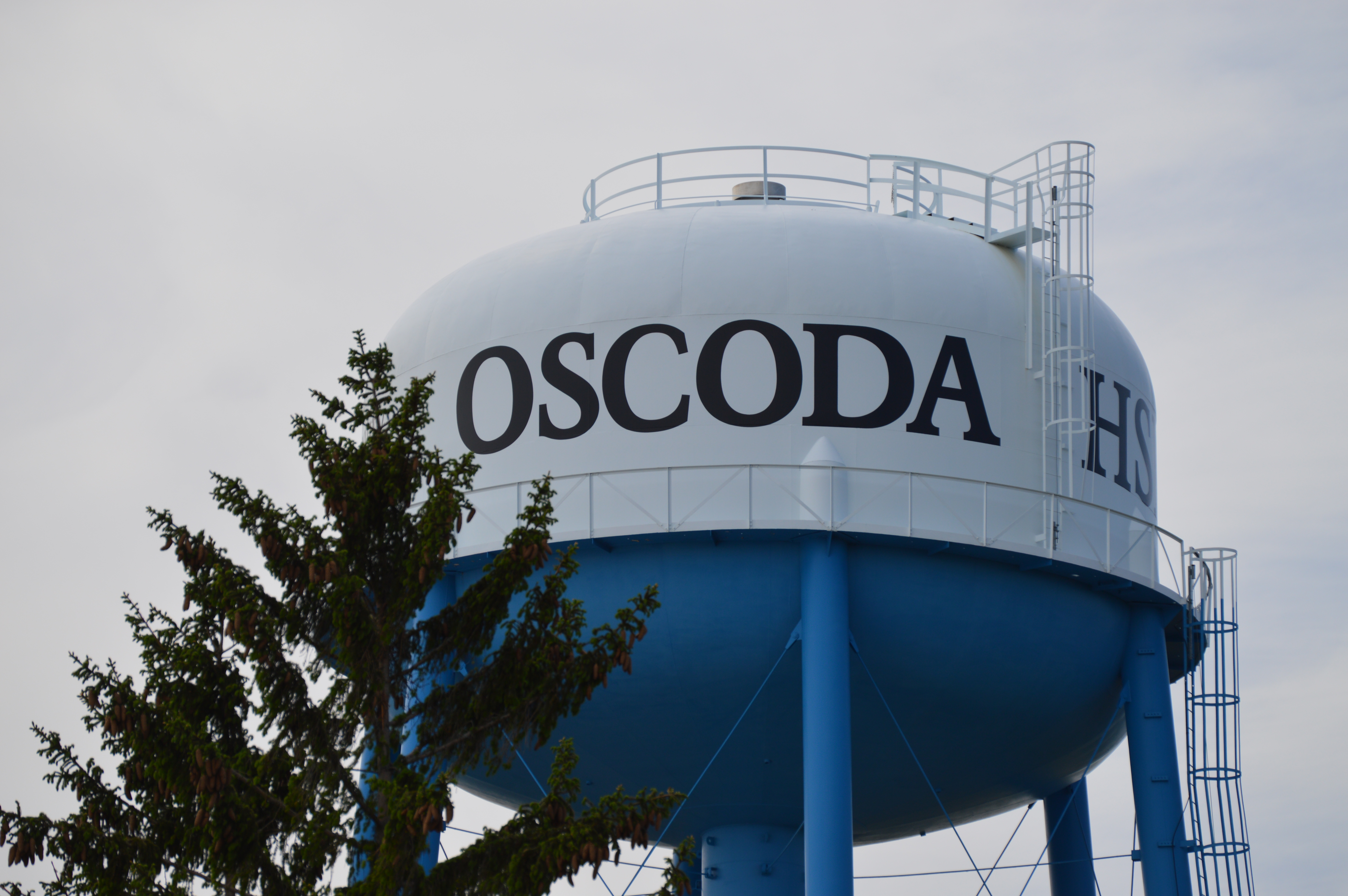

“The groundwater is contaminated [in Oscoda, and] the wells for a number of families have been affected,” says Congressman Dan Kildee, a Democrat who represents the community of Oscoda. Kildee also represents the city of Flint, which dealt with its own water crisis over the past few years.
“On one end of my district I have a city that’s been struggling with lead contamination,” says Kildee, “and now, at the north tip of my district, another, smaller community dealing with PFAS. And it’s a reminder that none of us can take drinking water for granted.”
Kildee says there are currently no viable solutions to clean PFAS contaminated communities. Recent reports show the EPA is sitting on a study about the harmful effects of PFAS contaminants because the White House deems it a “public relations nightmare”. Meanwhile, the scale of cleaning up entire contaminated communities is beyond the scope of widely used technology. Research shows household filters can clean PFAS contaminated drinking water, but it’s unclear what would be done to clean the water for an entire city or lake system.
“It is right that it is going to be expensive to do this right. There’s no question about it. But we know for sure it will be far more expensive to not do it,” says Kildee. “I think we just need to have an honest conversation in this country — about that and about infrastructure generally, but especially about drinking water — and make the choice that we’re going to have to spend the money to get it right.”
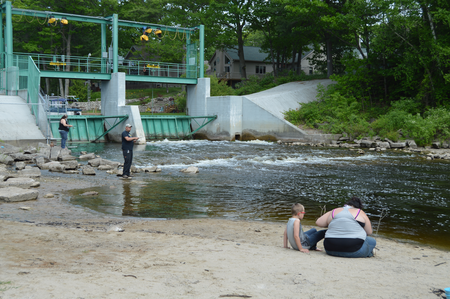
Anthony Spaniola says some of his neighbors in Oscoda have begun to despair as they realize government officials – at the state and federal levels – aren’t moving quickly to clean up their water.
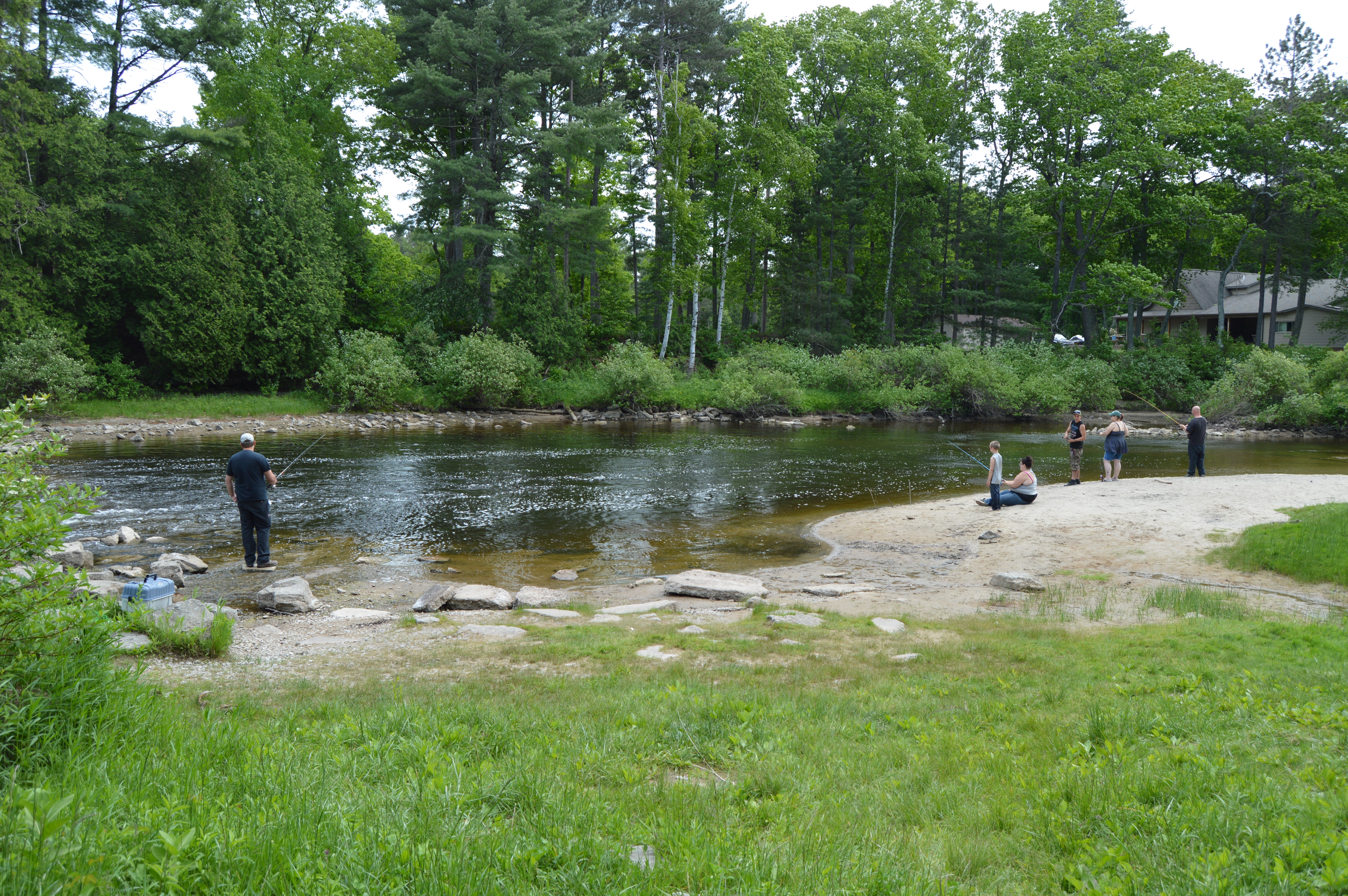
“It is Trump country up there so there is some skepticism about government, but they view life and the world as ‘You do the right thing and the right thing will happen to you, and that’s the way things go.’… I think my neighbors initially thought I was a little bit crazy, but once the information [about the dangers of PFAS] was verified and got out there, people have been saying ‘Well wait a second, we’ve been sitting back here assuming the best and it’s gotten us nowhere. So now we need to act.’”
The state has warned Oscoda residents not to eat fish from the Au Sable River that winds along the southern ridge of the old Air Force base and into Lake Huron.
The school in town has PFAS-contaminated drinking water.
And that sticky foam that washed up on Spaniola’s lake-side lawn has been seen in numerous locations on Van Etten Lake — floating, frothy islands, rich with PFAS chemicals.
The MDEQ says it’s leading the nation in PFAS research, and is conducting a statewide study of groundwater and PFAS contaminants that will be completed by the end of the year. MDEQ has done extensive research on the PFAS ground water plume in Oscoda, which you can see on their website. WDET spoke more with the MDEQ’s efforts on PFAS research, you can hear that interview here.
** Wolverine Worldwide writes on their website: “In 1998, 3M began discussions on their formula change with its customers because PFOA and PFOS – two of the PFAS family of compounds – were “persistent in the environment.” We relied on 3M’s representations to the EPA, FDA, scientific bodies, and Wolverine regarding the safety of the Scotchgard™ formula.”
Check out this map from the Michigan Department of Environmental Quality to see if your community has tested positive for PFAS contamination:
MDEQ PFAS Contaminated Sites by WDET 101.9 FM on Scribd
